
The top 10 most famous Spanish artists - the greatest masters of art of all time
Spanish artists have created numerous unique masterpieces of world art and will forever remain in the memory of grateful descendants. The works of the top 10 most famous of them are thoroughly studied by specialists, and the paintings of the great Spanish masters continue to captivate visitors to the world's best museums.
 10 most famous Spanish artists. Francisco Goya. The Third of May 1808, 1814
10 most famous Spanish artists. Francisco Goya. The Third of May 1808, 1814
The top 10 most famous Spanish artists are:
- El Greco (1541-1614).
- José de Ribera (1591-1652).
- Francisco de Zurbarán (1598-1664).
- Diego Velázquez (1599-1660).
- Bartolomé Esteban Murillo (1617-1682).
- Francisco Goya (1746-1828).
- Pablo Picasso (1881-1973).
- Joan Miró (1893-1983).
- Salvador Dalí (1904-1989).
- Antoni Tàpies (1923-2012).
The most famous Spanish artists belong to different historical periods, styles, and genres. Most of them gained recognition during their lifetime not only in their homeland but far beyond its borders.
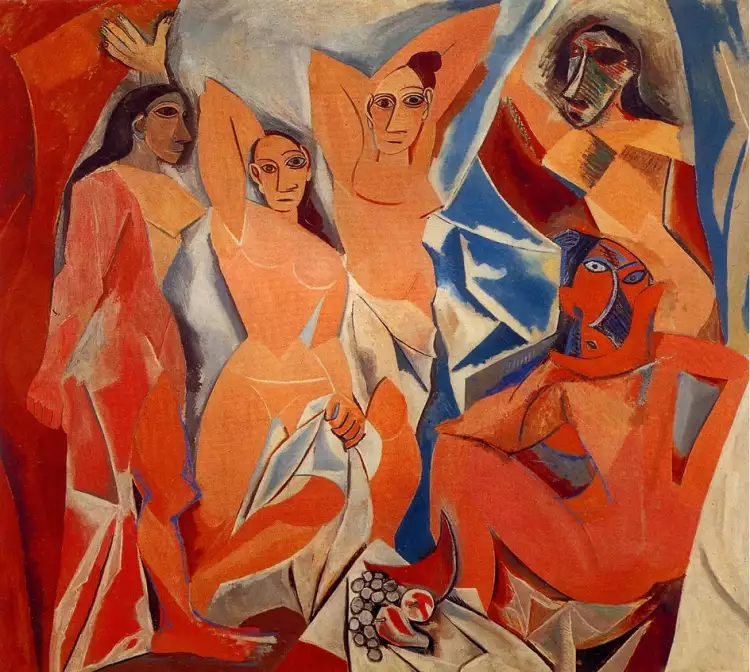 10 most famous Spanish artists. Pablo Picasso. The Ladies of Avignon, 1907
10 most famous Spanish artists. Pablo Picasso. The Ladies of Avignon, 1907
El Greco
 10 most famous Spanish artists. El Greco. Self-portrait, 1600
10 most famous Spanish artists. El Greco. Self-portrait, 1600
The greatest artist of the Spanish Renaissance was originally Greek, and his real name was Domenikos Theotokopoulos. Before moving to Toledo as his permanent place of residence, he spent about 10 years in Italy, where he had an excellent opportunity to familiarize himself with the works of ancient and Italian painters. El Greco considered color to be the most important element of visual art, so he used a rich palette of colors in his work. The master's works are also easily recognizable by the characteristic elongated figures of the heroes and the style of painting with broad brushstrokes. Cubists and expressionists drew inspiration from El Greco's paintings, and according to the majority of contemporary scholars, his work cannot be classified into any traditional painting school.
 10 most famous Spanish artists. El Greco. The Burial of the Count of Orgaz, 1586-1588
10 most famous Spanish artists. El Greco. The Burial of the Count of Orgaz, 1586-1588
Jose de Ribera
 10 most famous Spanish artists. José de Ribera. Self-portrait, 1633-1656
10 most famous Spanish artists. José de Ribera. Self-portrait, 1633-1656
An outstanding Caravaggesque painter of the Baroque era, Jose de Ribera was born near Valencia but left Spain at the age of 22 and settled in Naples for the rest of his life. His works are characterized by the superb realism of the subjects and a skillful use of light and shadow contrast. Despite the fact that Ribera spent a significant part of his life in Italy, most of his affluent patrons were Spaniards who specifically traveled to the Apennines to acquire the master's paintings. The deeply naturalistic works of the artist continue to astonish viewers with their powerful drama and the strength of the human spirit.
 10 most famous Spanish artists. José de Ribera. Prometheus, 1630
10 most famous Spanish artists. José de Ribera. Prometheus, 1630
Francisco de Zurbarán
In the work of this artist, a special place is occupied by paintings depicting Christian saints, martyrs, and prominent figures of the Catholic Church. In addition, Zurbarán was a master of still life, and for his skillful use of light and shadow in his works, he earned the nickname "The Spanish Caravaggio" during his lifetime. The bold style of the artist's early career brought him wide recognition, but it later deterred many patrons and supporters. The painter, who had once been a court artist to King Philip IV, died in poverty, facing serious financial difficulties.
 10 most famous Spanish artists. Francisco de Zurbarán. The ecstasy of St Francis, 1630-1639
10 most famous Spanish artists. Francisco de Zurbarán. The ecstasy of St Francis, 1630-1639
Diego Velázquez
Diego Velázquez's life turned out to be much more successful than that of his close friend Zurbarán. He was the most successful Spanish painter for most of his life and is rightfully considered the greatest master of the Golden Age of Spanish visual arts. At the age of 24, Velázquez was appointed the court painter to the king, which aroused the envy of numerous colleagues. The creative legacy of the master includes paintings in domestic, historical, mythological, and portrait genres. His works were highly valued by contemporaries, and centuries later, the painter's legacy became a source of inspiration for many representatives of Romanticism and Impressionism.
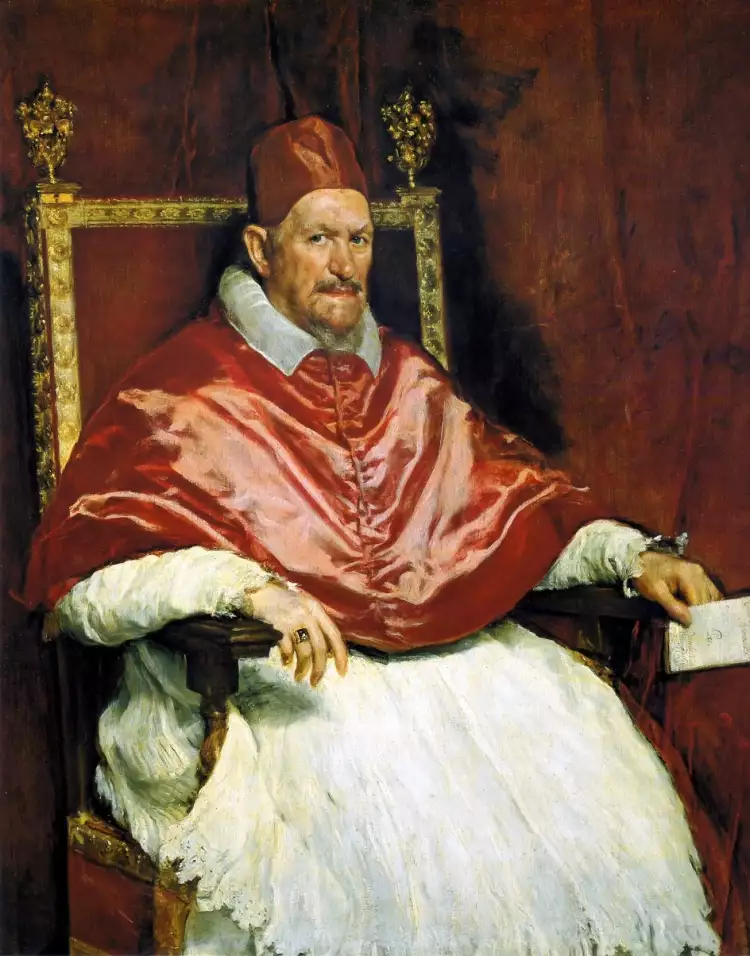 10 most famous Spanish artists. Diego Velázquez. Portrait of Innocent X, 1650
10 most famous Spanish artists. Diego Velázquez. Portrait of Innocent X, 1650
Bartolomé Esteban Murillo
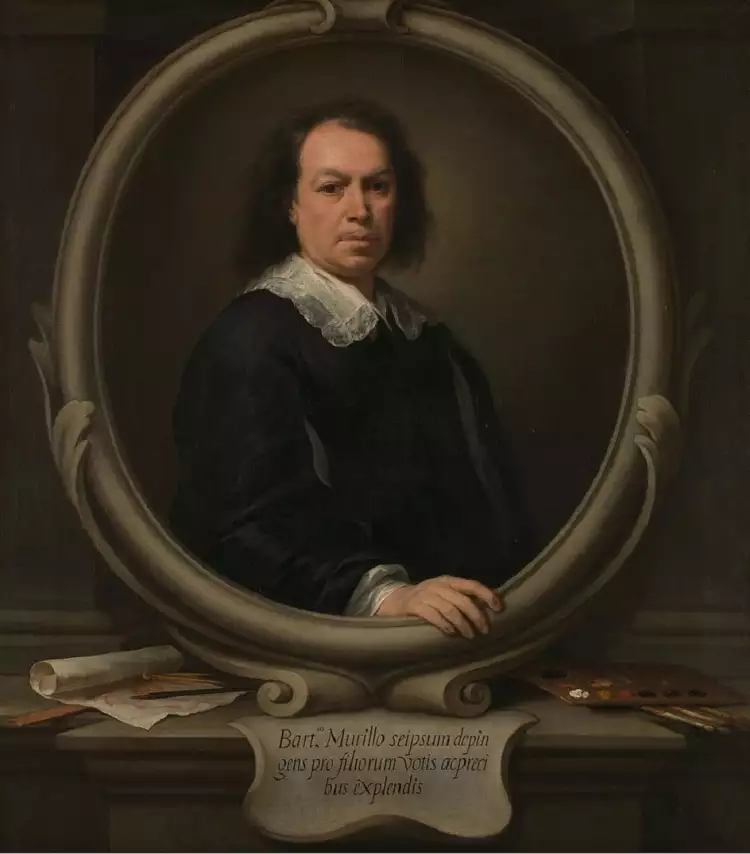 10 most famous Spanish artists. Bartolomé Esteban Murillo. Self-portrait, 1670
10 most famous Spanish artists. Bartolomé Esteban Murillo. Self-portrait, 1670
The greatest representative of the Sevillian School of painting primarily painted religious-themed works, although his legacy includes charming landscapes and genre paintings. Being a deeply religious person, Murillo, unlike most of his colleagues, led an ascetic life and had a tremendous influence in his homeland. The image of the Virgin Mary, to which dozens of beautiful works are dedicated, holds a special place in his work.
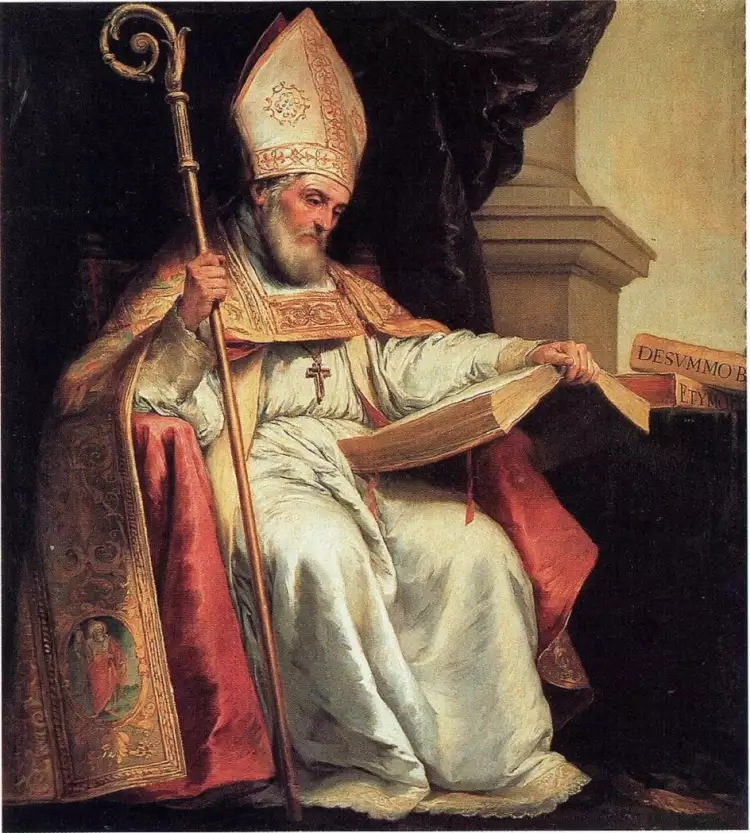 10 most famous Spanish artists. Bartolomé Esteban Murillo. Isidore of Seville, 1655
10 most famous Spanish artists. Bartolomé Esteban Murillo. Isidore of Seville, 1655
Francisco Goya
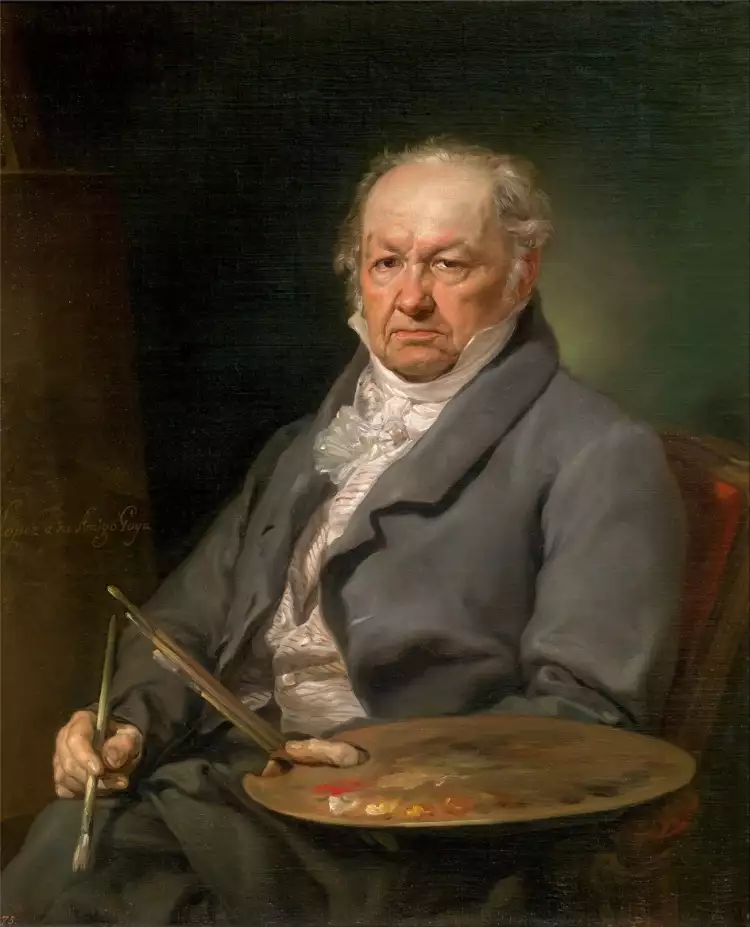 10 most famous Spanish artists. Vicente López y Portaña. Portrait of Francisco Goya, 1826
10 most famous Spanish artists. Vicente López y Portaña. Portrait of Francisco Goya, 1826
The most famous representative of Romanticism in the history of world visual arts left behind an enormous creative legacy. Throughout his life, he not only painted oil paintings but also created unique engravings. However, the character of his work varies greatly in different periods of his life. In the early stages of his artistic career, Goya's paintings were filled with the joy of contemplating the happy lives of his contemporaries, dominated by bright tones. But after the French Revolution, the master's painting style changed radically. During the difficult times of the guerrilla war and uprisings against the French rule, Goya created famous series of topical etchings and painted several famous works dedicated to the liberation of his country from invaders.
 10 most famous Spanish artists. Francisco Goya. The Second of May 1808, 1814
10 most famous Spanish artists. Francisco Goya. The Second of May 1808, 1814
Pablo Picasso
 10 most famous Spanish artists. Pablo Picasso. Photo portrait, 1962
10 most famous Spanish artists. Pablo Picasso. Photo portrait, 1962
The name of this artist is well known even to those far from the world of art. Pablo Picasso was undoubtedly one of the greatest painters of the 20th century, and he remains the most sought-after artist among collectors. Over his long life, the master created nearly 20,000 works and achieved wide recognition worldwide. He was not afraid to experiment with new techniques and materials, boldly creating revolutionary styles in art. He excelled in sculpture, graphics, and design, in addition to painting. Picasso spent most of his life in France, while his work was banned in his native Spain for a long time. The artist led an active public life, was a fervent advocate of communist ideas, and a sincere opponent of war.
 10 most famous Spanish artists. Pablo Picasso. Guernica, 1937
10 most famous Spanish artists. Pablo Picasso. Guernica, 1937
Joan Miró
 10 most famous Spanish artists. Joan Miró. Photo portrait, 1935
10 most famous Spanish artists. Joan Miró. Photo portrait, 1935
In the works of Joan Miró, alongside elements of abstract art, there are also surrealistic motifs, and his legacy includes paintings, sculptures, monumental works, sketches, lithographs, and engravings. In his early years, Miró was fascinated by the ideas of expressionism, fauvism, and cubism, but later his preferences changed. Many of the master's paintings resemble children's drawings, and he used a wide variety of materials, from ceramics and bronze to cardboard and iron, to create sculptures. Miró's frescoes adorn the walls of the UNESCO office in Paris and Harvard University, and his paintings are sold in the art market for substantial sums.
 10 most famous Spanish artists. Joan Miró. Woman and Bird, 1983
10 most famous Spanish artists. Joan Miró. Woman and Bird, 1983
Salvador Dalí
 10 most famous Spanish artists. Salvador Dalí, Photo portrait, 1939
10 most famous Spanish artists. Salvador Dalí, Photo portrait, 1939
The extravagant Salvador Dalí is rightly considered the most famous surrealist artist in the world. Being an extraordinary creative personality, Dalí astonished those around him with his outrageous actions throughout his life. He easily embraced new ideas and was always at the center of events. In addition to painting, he gained fame for his interesting graphic works, sculptures, and photographs. He successfully tried his hand at directing, design, screenwriting, and literature. Dalí's image still sparks fervent discussions among art connoisseurs and often becomes a subject of cinematic representation.
 10 most famous Spanish artists. Salvador Dalí. The Persistence of Memory, 1931
10 most famous Spanish artists. Salvador Dalí. The Persistence of Memory, 1931
Antoni Tàpies
 10 most famous Spanish artists. Antoni Tàpies. Photo portrait, 2002
10 most famous Spanish artists. Antoni Tàpies. Photo portrait, 2002
The avant-garde artist Tàpies was a self-taught painter who did not recognize authorities in art. He developed his own style of art, mixing elements of abstraction and symbolism. Despite the originality of his views, Tàpies's ideas were often met with enthusiasm by viewers and critics. His personal exhibitions enjoyed great success, and by the end of his life, the artist had received numerous awards and accolades. To create sculptures and paintings, the master frequently used very unconventional materials, including straw, fabric, and sand. He also gained fame as an outstanding art theorist, and his books in this field have been translated into dozens of foreign languages.
 10 most famous Spanish artists. Antoni Tàpies. Sock, 2011
10 most famous Spanish artists. Antoni Tàpies. Sock, 2011
In addition to the artists listed above, Spain has given the world many other great masters of the visual arts. Well-known Spanish artists also include:
- Joaquín Sorolla.
- Mariano Fortuny.
- Juan Gris.
- Juan Bautista Martínez del Mazo.
- Ignacio Zuloaga.
- Ramon Casas.
- Juán de Flandes.
- Francisco Ribalta.
- Antonio Pereda.
- Juan Pantoja de la Cruz.
- Luis de Morales.
- Emiliо Sala i Francés.
- Juan de Juanes.
- Isidro Nonell.
- Francisco Herrera.
- Vicente López y Portaña.
- Juan Carreño de Miranda.
- Juan de Valdés Leal.
- Francisco Pradilla.
 10 most famous Spanish artists. El Greco. Assumption of the Virgin, 1579
10 most famous Spanish artists. El Greco. Assumption of the Virgin, 1579
The Spanish artists listed above have not only brought glory to their homeland but have also made a significant contribution to the world's cultural heritage. Their works always capture the attention of viewers at exhibitions and hold an esteemed place in museum collections.



 The paintings "Bedroom in Arles" by Vincent van Gogh are iconic works of a brilliant master
The paintings "Bedroom in Arles" by Vincent van Gogh are iconic works of a brilliant master  Illustration is a colorful and visually appealing drawing that complements the content of a book
Illustration is a colorful and visually appealing drawing that complements the content of a book  Sèvres porcelain
Sèvres porcelain  Claude Monet: biography, artwork, best paintings of the French Impressionist artist
Claude Monet: biography, artwork, best paintings of the French Impressionist artist  The Renaissance of Historic Tapestries
The Renaissance of Historic Tapestries  Watercolor - the airy lightness of the rainbow: types, techniques, history
Watercolor - the airy lightness of the rainbow: types, techniques, history  Genre of Nude in Painting: Evolution and Historical Trends of the Nude Style
Genre of Nude in Painting: Evolution and Historical Trends of the Nude Style  Etching is a type of engraving and printing technique
Etching is a type of engraving and printing technique  Albert Figdor Collection: Sweets for the ladies. Cigars for the gentlemen
Albert Figdor Collection: Sweets for the ladies. Cigars for the gentlemen  The painting "Cross in the Mountains" ("Tetschen Altar") by Caspar David Friedrich is an attempt to convey the presence of God through the elemental force of nature
The painting "Cross in the Mountains" ("Tetschen Altar") by Caspar David Friedrich is an attempt to convey the presence of God through the elemental force of nature